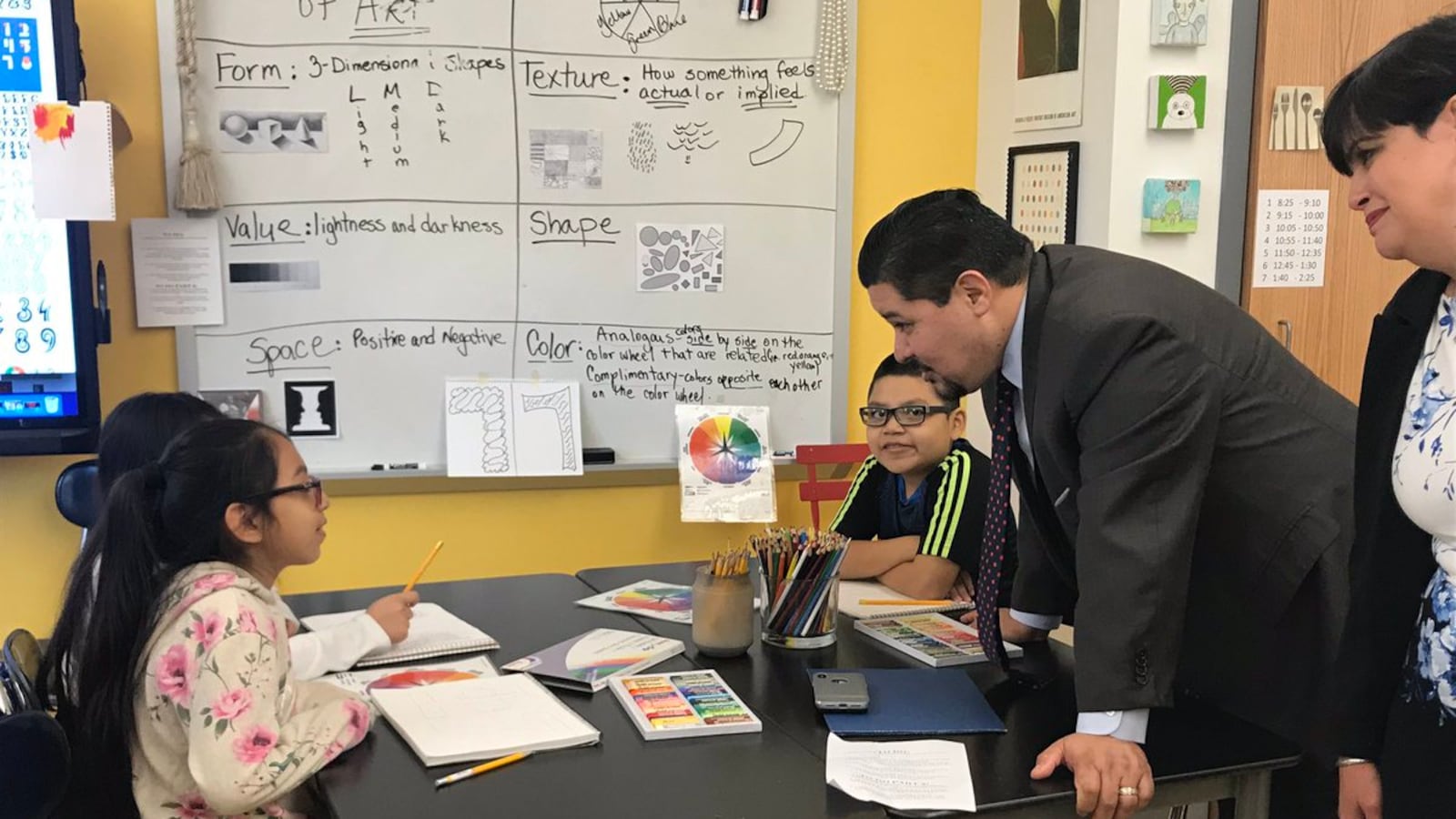Heeding calls from advocates, schools Chancellor Richard Carranza proposed Thursday a $750 million plan to improve accessibility for students with disabilities at a third of the schools in every district.
The announcement comes after months of urging from advocates over the lack of access for students with disabilities in a majority of school buildings.
About 80 percent of New York City’s public schools are not completely accessible. Last budget cycle, the city committed $150 million to improve access over the next three years. But in order to make just a third of school buildings accessible, advocates estimated a cost of another $750 million.
Officials said that, under the new plan, they expect half of elementary school buildings will be partially or fully accessible.
Advocates for children with disabilities applauded the news. The plan will “literally open the doors to inclusion,” said Kim Sweet, executive director for Advocates of Children New York, in a statement.
“We have been pushing for improved accessibility since we did the math a few years ago and in speaking to families,” said Maggie Moroff, special education policy coordinator for Advocates for Children, at the news conference. “And it’s become clearer and clearer that we needed more accessible options at every school level.”
Accessibility projects will range from “really easy fixes,” such as adding ramps for wheelchairs, to “very big overhaul projects,” such as building access to a second-floor gym, said Karin Goldmark, deputy chancellor for school planning and development.
But the city won’t focus right now on buildings that have zero access, Goldmark said, who noted that many of them are a century old and have certain structural challenges that would require complete demolition.
“You would have to tear down and start over in order for it to be a project that’s really meaningful, and that’s not contemplated in this $750 million,” Goldmark said. “What we’re looking at it is all of the schools that we can really move along, continue accessibility so that we can get schools that are partially accessible to fully accessible, we can get some schools that have some potential to (become) partially accessible in a meaningful way.”
Carranza’s announcement — which came during a visit to P.S. 11’s new school building in Queens — is part of a proposed $17 billion five-year capital plan, which he said was the largest proposal of its kind in the school system’s history.
“You see, ladies and gentleman, when I first came to New York City a little over six months ago and I engaged in my tour to listen to communities across all five boroughs, and to listen to parents and community members and staff members and students, the three things they said to me that were loud and clear were, no. 1, we want more technology —it’s in this plan,” Carranza said. “The next thing they said to me was, ‘We want permanent classroom facilities’ — it’s in this plan. And the other thing they said to me was, ‘We want to have air conditioning in our schools’ — it’s in this plan.”
Carranza toured what he called a “state-of-the-art” building. He visited art and English classes, where children described their projects to him. He credited the new building with engaging the students.
“The facility (at P.S. 11) not only enables but allows students to unleash their creativity,” Carranza said. “What is so clear here today is that when we give students these kind of state-of-the art — and I’m going to underline ‘permanent’ — facilities and resources, we’re helping them to achieve.”
The plan also includes new funding for 57,000 student seats to fulfill a commitment to reduce overcrowding that officials made about two and a half years ago by building a total 83,000.
These seats won’t necessarily be ready to go in the next five years, officials said. Rather, they will all be “sited” — in some design or planning phase.
Those 57,000 seats include 14,000 that were rolled over from the current capital plan, said Lorraine Grillo, president and CEO of the school construction authority.
Those seats will be added into new buildings or will be additions to existing schools, Carranza said.
The plan also calls for air conditioning for all classrooms by 2021 — a year earlier than previously planned.
About $750 million of the capital plan will go toward increased internet bandwidth and cybersecurity upgrades in schools. A “vast majority” of this funding will go toward upgrading the networking equipment in schools so they can access increased bandwidth, Goldmark said.
Another $550 million will create new pre-K and 3-K seats.
A report from a City Council working group in May found that 54 percent of elementary and middle schools and 47 percent of high schools are “over-capacity.” And 80,000 more students are expected in the city by 2040.
The capital plan will be sent to the Panel for Educational Policy following a public comment period in March and requires final approval from the mayor and city council.

